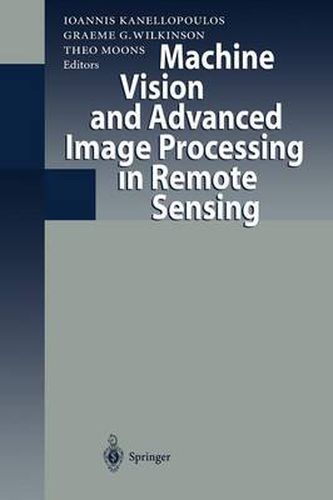Readings Newsletter
Become a Readings Member to make your shopping experience even easier.
Sign in or sign up for free!
You’re not far away from qualifying for FREE standard shipping within Australia
You’ve qualified for FREE standard shipping within Australia
The cart is loading…






This title is printed to order. This book may have been self-published. If so, we cannot guarantee the quality of the content. In the main most books will have gone through the editing process however some may not. We therefore suggest that you be aware of this before ordering this book. If in doubt check either the author or publisher’s details as we are unable to accept any returns unless they are faulty. Please contact us if you have any questions.
Since 1994, the European Commission has undertaken various actions to expand the use of Earth observation (EO) from space in the Union and to stimulate value-added services based on the use of Earth observation satellite data.‘ By supporting research and technological development activities in this area, DG XII responded to the need to increase the cost-effectiveness of space derived environmental information. At the same time, it has contributed to a better exploitation of this unique technology, which is a key source of data for environmental monitoring from local to global scale. MAVIRIC is part of the investment made in the context of the Environ ment and Climate Programme (1994-1998) to strengthen applied techniques, based on a better understanding of the link between the remote sensing signal and the underlying bio- geo-physical processes. Translation of this scientific know-how into practical algorithms or methods is a priority in order to con vert more quickly, effectively and accurately space signals into geographical information. Now the availability of high spatial resolution satellite data is rapidly evolving and the fusion of data from different sensors including radar sensors is progressing well, the question arises whether existing machine vision approaches could be advantageously used by the remote sensing community. Automatic feature/object extraction from remotely sensed images looks very attractive in terms of processing time, standardisation and implementation of operational processing chains, but it remains highly complex when applied to natural scenes.
$9.00 standard shipping within Australia
FREE standard shipping within Australia for orders over $100.00
Express & International shipping calculated at checkout
This title is printed to order. This book may have been self-published. If so, we cannot guarantee the quality of the content. In the main most books will have gone through the editing process however some may not. We therefore suggest that you be aware of this before ordering this book. If in doubt check either the author or publisher’s details as we are unable to accept any returns unless they are faulty. Please contact us if you have any questions.
Since 1994, the European Commission has undertaken various actions to expand the use of Earth observation (EO) from space in the Union and to stimulate value-added services based on the use of Earth observation satellite data.‘ By supporting research and technological development activities in this area, DG XII responded to the need to increase the cost-effectiveness of space derived environmental information. At the same time, it has contributed to a better exploitation of this unique technology, which is a key source of data for environmental monitoring from local to global scale. MAVIRIC is part of the investment made in the context of the Environ ment and Climate Programme (1994-1998) to strengthen applied techniques, based on a better understanding of the link between the remote sensing signal and the underlying bio- geo-physical processes. Translation of this scientific know-how into practical algorithms or methods is a priority in order to con vert more quickly, effectively and accurately space signals into geographical information. Now the availability of high spatial resolution satellite data is rapidly evolving and the fusion of data from different sensors including radar sensors is progressing well, the question arises whether existing machine vision approaches could be advantageously used by the remote sensing community. Automatic feature/object extraction from remotely sensed images looks very attractive in terms of processing time, standardisation and implementation of operational processing chains, but it remains highly complex when applied to natural scenes.